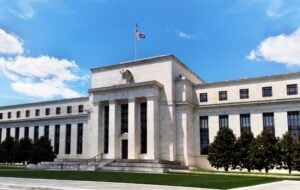
The sound money community lost one of its most insightful and influential thinkers this Memorial Day weekend with the passing of Richard H. Timberlake, who died peacefully on May 22nd at 97 years old.
Timberlake was one of the most prolific monetary historians of the 20th century and a leading figure in the sound money community. Born in Steubenville, Ohio on June 24, 1922, Timberlake served in the U.S. Air Force in World War II and was awarded three Purple Hearts. He received his bachelor’s degree from Kenyon College in 1946 and his Master’s from Columbia University in 1950. He later enrolled in the PhD program at the University of Chicago, where he studied under Milton Friedman.
After earning his doctorate in 1959, Timberlake published dozens of articles in premier economic journals like the Journal of Political Economy, the Quarterly Journal of Economics, the Journal of Money, Credit and Banking and the Journal of Monetary Economics. He also authored seven books on monetary history which are must-reads for anyone interested in the history of central banks and monetary policy in the United States.
Timberlake will be remembered as one of the most impactful sound money scholars of the 20th century not only because of his own extensive work on private monetary systems but also because of his far-reaching influence on younger scholars in the modern free banking tradition that, thanks in large part to his guidance, experienced a renaissance in the 1980s. Timberlake wrote extensively on the evolution of private monies and the workings of both free banking and central banking systems. Many of his most cited works were published during the Great Stagflation of the 1970s, which was a time of soul-searching within the monetary economics community. Not coincidentally, this was right around the same time that F.A. Hayek’s Choice in Currency and Denationalisation of Money were published.
Timberlake’s work provided a fresh and much-needed perspective in these tumultuous times. He was a sharp critic of central banks and a tireless proponent of monetary freedom and competition. Through his dozens of scholarly books and articles, he lent enormous intellectual support to the idea that central bank monopolies to create and regulate money were far from a panacea and that private alternatives would deliver higher quality monies. He served as a mentor to two of today’s most influential free banking scholars, Lawrence H. White and George Selgin, who joined Timberlake at his longtime academic home, the University of Georgia, in the 1980s.
Timberlake is perhaps best known for his devastating critiques of the Federal Reserve System. He was among the first economists to explore the inner workings of the pre-Fed private clearinghouse associations in the United States. As Timberlake demonstrated, by serving as de facto private “lenders of last resort,” these private clearinghouses played a key role in stabilizing the economy and protecting against bank runs and panics in the pre-Fed era by providing emergency liquidity in the form of paper currency to banks whenever there was a spike in the demand for money. All this was in spite of the fact that their notes were not legal tender (and, technically, were often illegal).
He also wrote extensively about the Fed’s failures during the Great Depression. He stressed the role that the real bills doctrine played in fueling the contractionary monetary policy of the early 1930s that paved the way for a 30% fall in the money supply and subsequent deflationary spiral that made the Great Depression so “Great.” He also provided a qualified defense of the gold standard. Although the gold standard has been commonly cited as one of (if not the) primary causes of the Great Depression, Timberlake demonstrated that the Fed did not suffer from enormous gold shortages and hence was not, in fact, constrained in its ability to provide much-needed liquidity to financial markets during the Great Contraction. In short, the Fed and other central banks didn’t fail so catastrophically in the 1930s because they were handcuffed by the gold standard. Rather, the gold standard failed because it was so tightly constrained and poorly managed by central banks.
Timberlake’s work on how the Fed’s policy failures contributed to the Great Contraction has been favorably cited by a wide range of economists. Although far from being an enthusiastic supporter of the pre-Fed monetary system in the United States, which itself was hampered by excessive and poorly designed regulations, Timberlake’s work highlighted both the failures of the Fed and the potential superiority of private monetary arrangements. His work on these topics even helped convince Milton Friedman that the United States would’ve been better off without the Federal Reserve, an idea that Friedman explored in greater detail later in his life when he began writing on how monetary systems might work without a central bank.
Timberlake remained an active writer and impeccable monetary thinker well into his later years. Building off the work of Leland Yeager and others, much of his work focused on what a “constitutional” monetary system might look like. His 2013 book Constitutional Money: A Review of the Supreme Court’s Monetary Decisions is a classic on how various legal rulings have impacted the monetary system of the United States. He completed his last book, Gold, the Real Bills Doctrine, and the Fed: Sources of Monetary Disorder – 1922-1938, in 2019 at tage of 97.
Timberlake provided a blueprint for future sound money scholars to conduct thorough and well-respected research on monetary theory and history. Although we are saddened by his loss, we are forever grateful for the lasting impact he has made on our understanding of monetary economics. He will be missed, but his legacy will not soon be forgotten.




